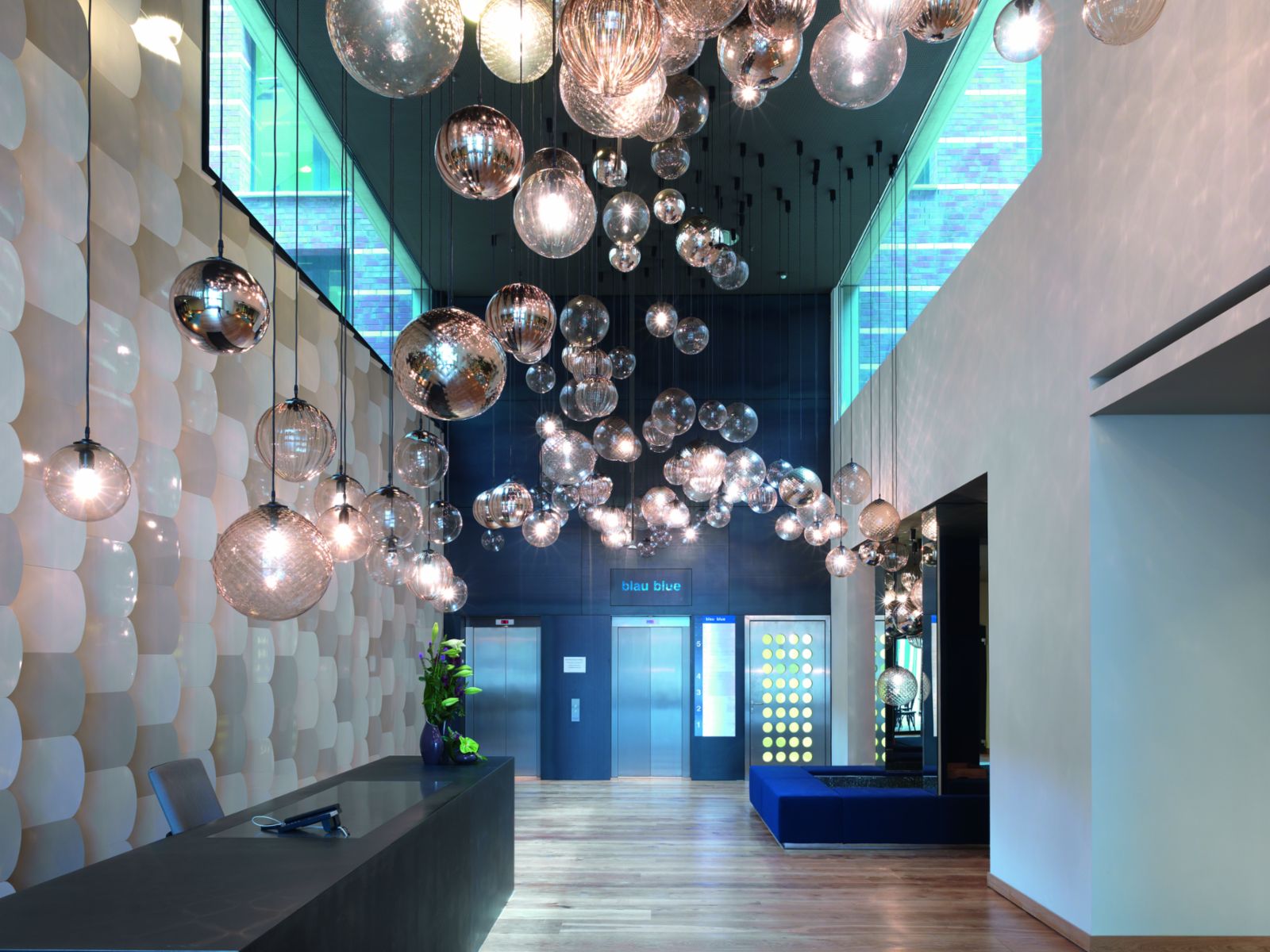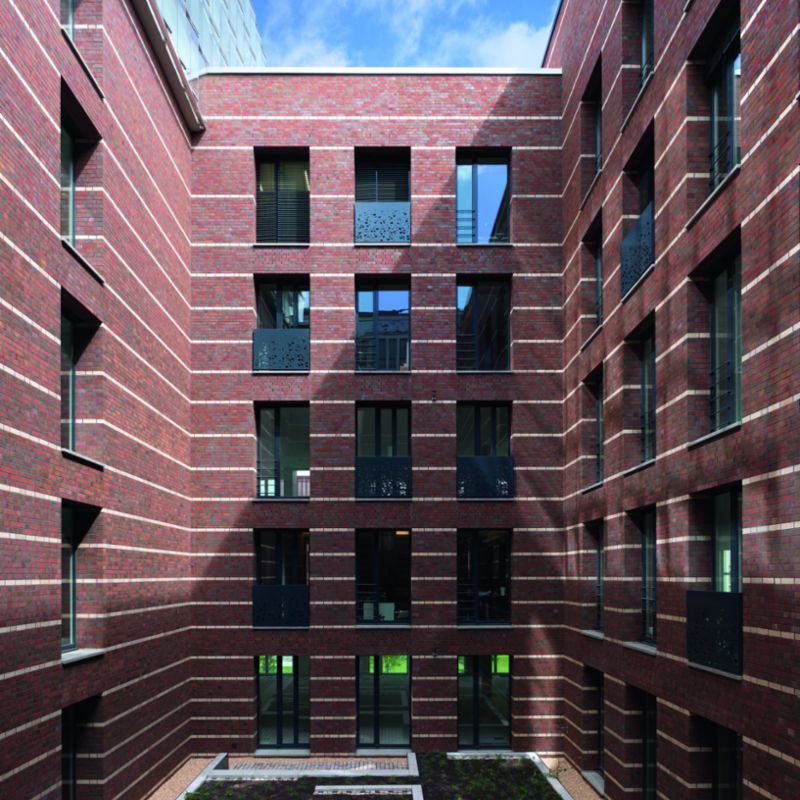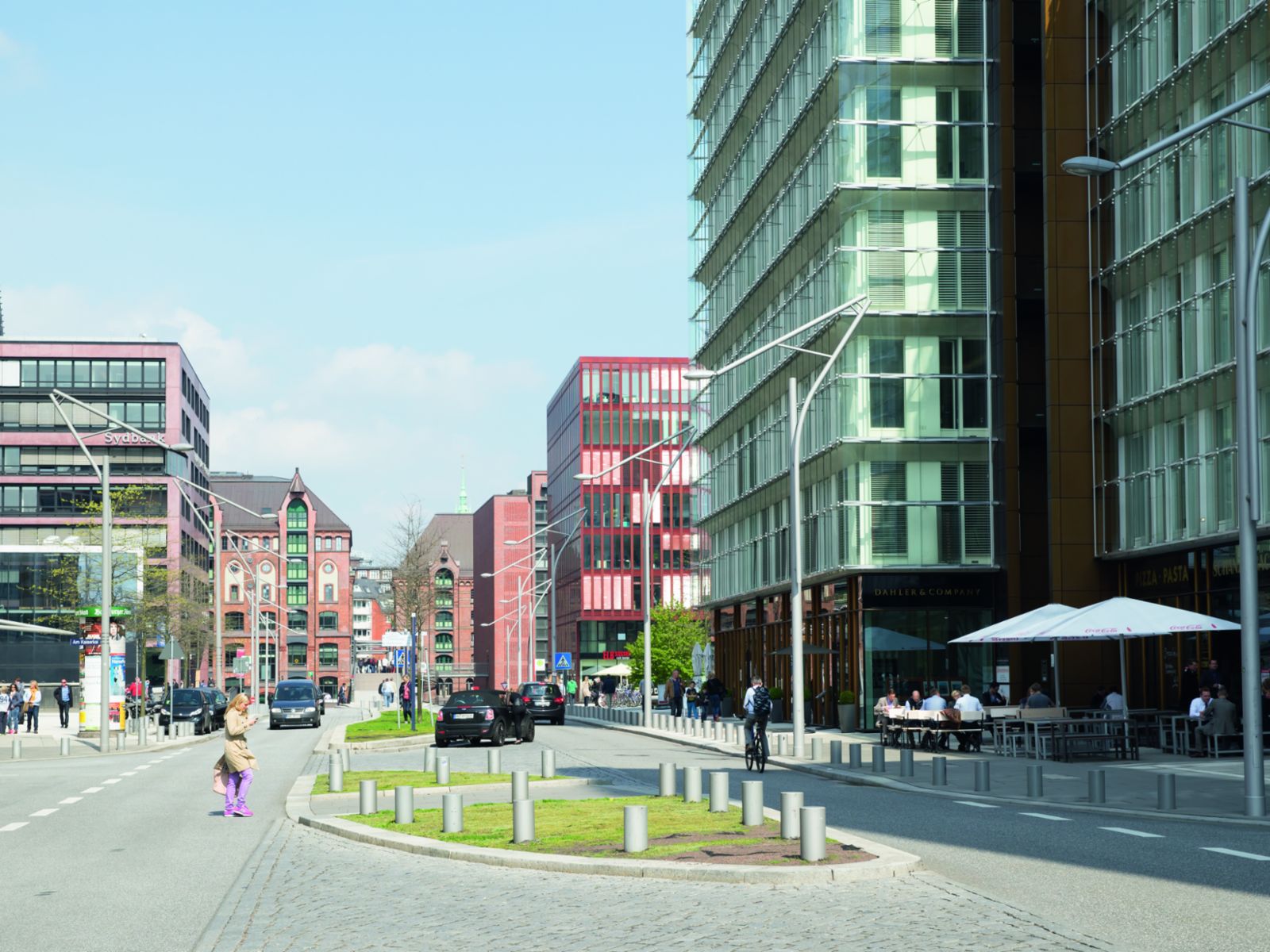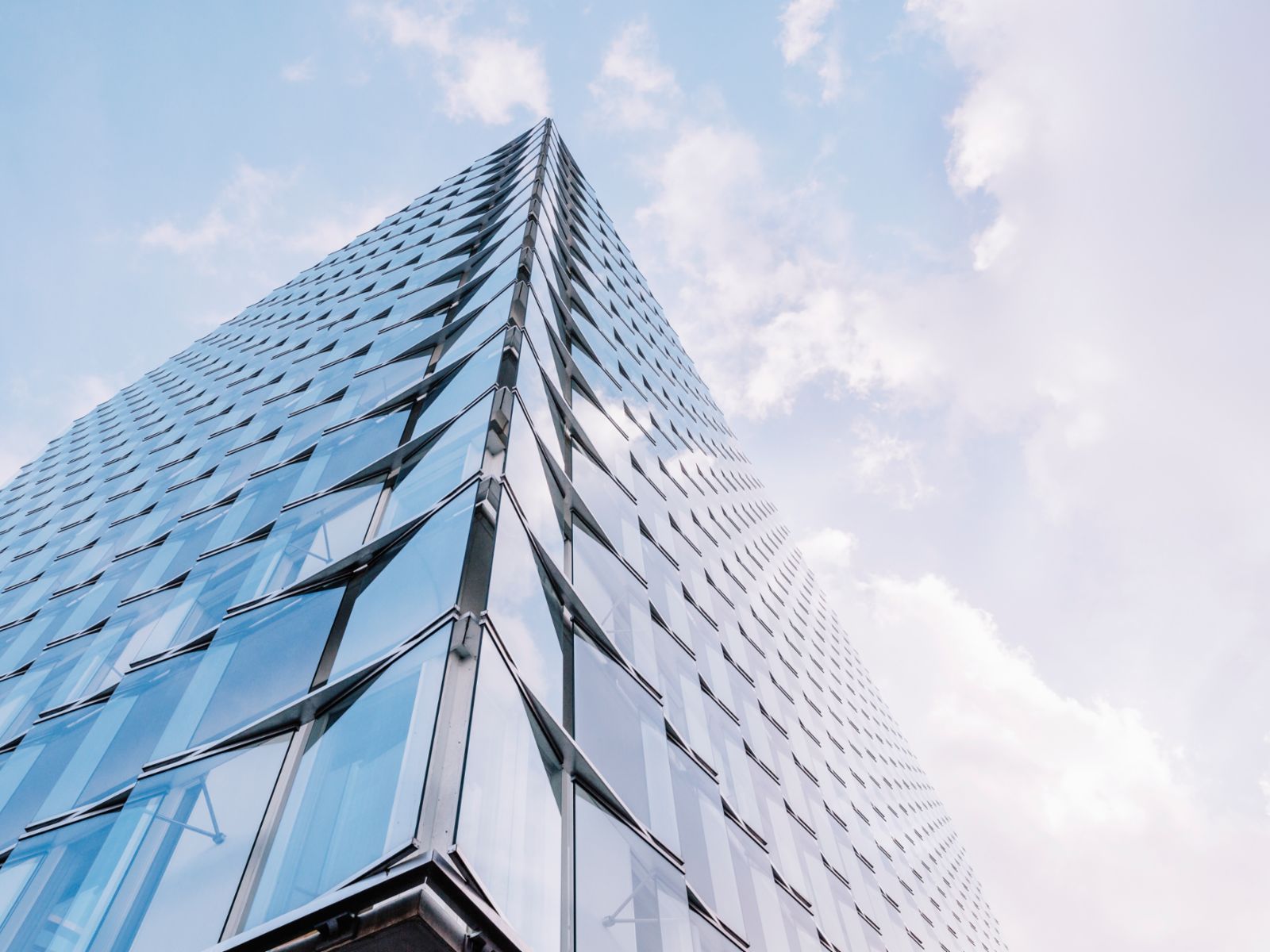If you meet Kathrin Unterrainer at her workplace, the experience is certain to be a memorable one. It starts when you set foot on the roof of the Centurion Commercial Center, with its stunning views of Hamburg’s HafenCity development and the Elbphilharmonie concert hall. The roof also features a number of inlets that are rather less spectacular than the view, but crucial for sustainable operation of the property. They collect rainwater, which is fed into a 7,500 litre container and used to supply the whole building with non-drinking water.
Centurion is one of three properties that Kathrin Unterrainer is responsible for as property manager. “Property managers are agents of the owner. We deal with practical implementation of their requirements and expectations,” she says. Her duties include responding to tenants’ needs, checking service providers, and maintenance management. She also provides support during the lettings process. Unterrainer has a qualification in real estate management and began working in property management in 2004. A lot has changed since then. “In the past, it was more of a passive admin role, whereas today buildings are managed proactively. A property shouldn’t just be kept in good condition, it also needs to be continuously improved,” she says. And one particular factor has been steadily gaining in importance for some years now: “Whatever task I’m doing, I’m always thinking about sustainability.” ↓

“A property shouldn’t just be kept in good condition, it also needs to be continuously improved.” Kathrin Unterrainer property manager of the Centurion Commercial Center

Sustainable technology is a defining feature
This is especially true for Centurion, which has to comply with HafenCity label energy consumption requirements as well as meet Union Investment’s high sustainability standards. Sustainable technologies are used throughout the building. The rainwater harvesting system on the roof is one example, as are the LED lamps that have been installed in all the light fittings. They use electricity from a certified green electricity provider, with whom Union Investment has signed a contract to supply environmentally friendly power to all its properties in Germany.
The building is covered externally by a layer of glass slats that protect the façade from the wind and the elements. Motion sensors in the underground car park ensure that lights are switched on only when needed. But the biggest energy saving measure is the geothermal system. Geothermal power is used to heat water that keeps the building core at a consistent temperature of 18 degrees. ↓

Data as the basis for improvement
The systems are controlled from the building control centre. Kathrin Unterrainer uses the data collected here to manage the building for maximum sustainability. The data is supplemented by the Sustainable Investment Check (SI Check) developed by Union Investment. The SI Check captures information in several categories. It assesses technical facilities and ecological features such as the responsible use of resources – for example, in the form of a water, waste or energy management system. It also looks at social aspects of the property, including disability access, public transport links, the availability of green spaces and whether the building gets enough natural light. “The SI Check is a highly effective and well thought-out tool because it involves scrutinising the building from the foundations right up to the roof,” says the property manager. “Union Investment combines all this data to produce a property report that the asset manager and myself use as a basis for planning.”
Kathrin Unterrainer’s aim is to steadily reduce consumption even further. “It’s a complex business,” she says. “In many ways, building technology is like a car. Going back a few years, you could take care of many issues yourself if you had the necessary skills, whereas nowadays it’s much more difficult to find out whether a wire is wrongly attached somewhere.” That’s why she also seeks advice from external experts. Since 2019, Centurion has been participating in an energy monitoring pilot project run by Union Investment. ↓
The SI Check is a highly effective and well thought-out tool because it involves scrutinising the building fromthe foundations right up to the roof. Kathrin Unterrainer property manager of the Centurion Commercial Center

Winning over tenants is part of the job
Data and technology are vital for sustainable building management, but not enough on their own. “It’s the asset manager, property manager and facility manager who make a building genuinely sustainable by managing it properly and leveraging its strengths,” says Unterrainer. But sustainability also depends on the people who use the building every day: the tenants.
The property manager plays an important role here as well. She has to convince tenants of the benefits of sustainability measures when they appear to conflict with comfort. For example, geothermal systems are naturally quite slow and cannot heat up buildings as fast as conventional central heating. “I try to explain to our tenants that you can’t just flip a switch for instant results, and I show them how to adjust their heating behaviour accordingly.” Tenants are also given a specially produced building manual that explains the specific features of Centurion. ↓
“The tenant can use our analysis to bear down on their energy consumption and achievesignificant cost savings. That’s a win-win situation for tenants and the environment.” Kathrin Unterrainer property manager of the Centurion Commercial Center

Complex issues are solved on site
Ideally, the tenants will also be prepared to play an active part in collecting consumption data. “If they are, it means I’m not only able to solve urgent issues or recommend the use of LED lighting, but can also take a proactive approach towards optimising resource consumption. As a reward for the extra effort, the tenant can use our analysis to bear down on their energy consumption and achieve significant cost savings. That’s a win-win situation for tenants and the environment.”
Previously, Kathrin Unterrainer visited the buildings she oversees up to ten times a month, but since the start of the COVID-19 pandemic her contact with tenants and with asset and facility managers has mainly been online. She is aided by newly installed meters that can be read remotely on her computer at home. However, she cannot do her job without making at least some site visits. One such visit was to a building that is buffeted so strongly by the wind on one side that its sun protection blinds are not fully usable. An alternative solution in this case would be to install sun protection film. However, that might mean temperatures would soar, potentially leading to cracks forming in the panes. The engineering consultancy called in to deal with the issue also needed to carry out an on-the-spot check of whether the building’s ventilation would be able to compensate for this warming. “In the circumstances, we decided to meet on site after all,” says Kathrin Unterrainer with a smile. Sometimes, there’s no substitute for seeing things for yourself. •
